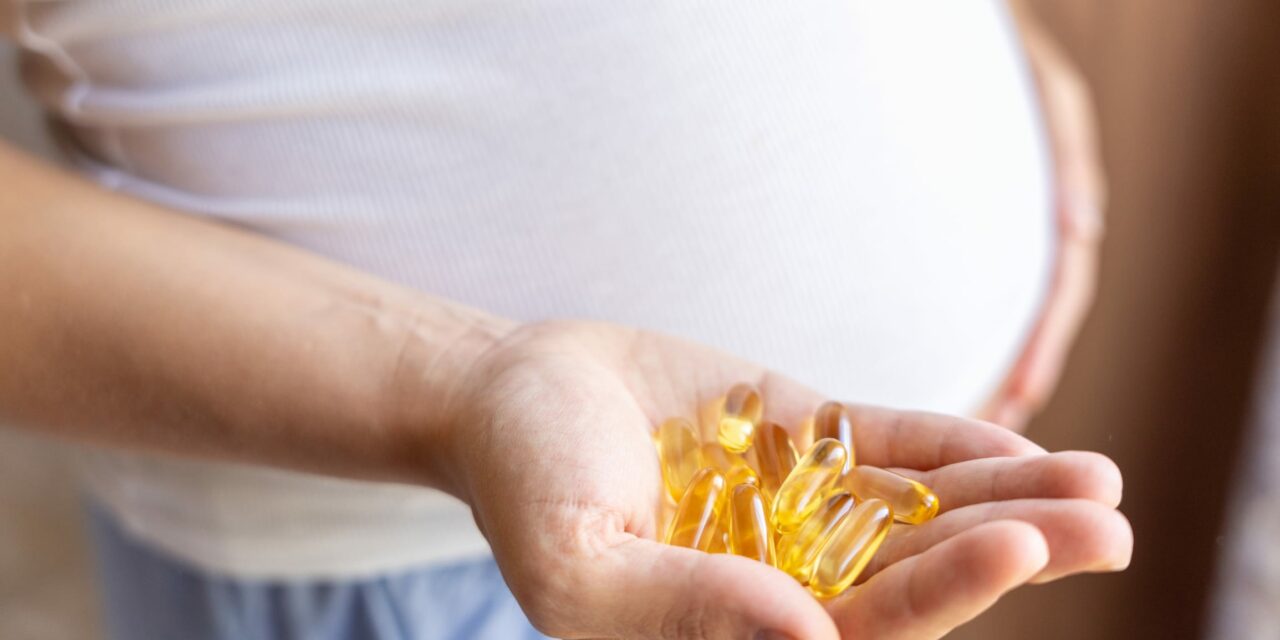A review of 15 years’ worth of data from the Vitamin D Antenatal Asthma Reduction Trial (VDAART) found that vitamin D supplementation during pregnancy reduced rates of asthma and wheezing in children compared to standard prenatal multivitamin.
The review from investigators from Brigham and Women’s Hospital, a founding member of the Mass General Brigham healthcare system, strengthens the link between vitamin D levels during pregnancy and childhood wheezing and asthma in offspring. It’s published in the Journal of Allergy and Clinical Immunology.
“Vitamin D deficiency is very common, especially in pregnant women who are not taking supplements,” says study first author Scott T Weiss, MD, MS, associate director of the Channing Division of Network Medicine at Brigham Women’s Hospital and professor at Harvard Medical School, in a release. “Based on our findings, we would recommend that all pregnant women consider a daily intake of at least 4400 IU vitamin D3 throughout their pregnancy, starting at the time of conception.”
Vitamin D is a nutrient from sunlight exposure, diet, or supplements. It is commonly considered essential to bone health but also has a role in autoimmune and other illnesses. The review links vitamin D deficiency to childhood asthma and wheezing, a major cause of illness in young children. About 40% of kids report daily wheezing at age three. By age 6, 20% are diagnosed with asthma.
“Based on our findings, we would recommend that all pregnant women consider a daily intake of at least 4400 IU vitamin D3 throughout their pregnancy, starting at the time of conception.”
Scott T Weiss, MD, MS
The link between childhood asthma and vitamin D has been contentious. Observational studies suggest that higher vitamin D levels during pregnancy can be protective against asthma. However, a clinical trial of vitamin D supplementation in pregnancy, the VDAART, was inconclusive when comparing the supplemented group to the non-supplement group.
“In general, the observational studies show an effect, but the clinical trials don’t because nutrient trials are very different from drug trials,” Weiss says in the release. “In a drug trial, you’re comparing giving a drug to giving no drug. In a nutrient trial, you’re comparing more of a nutrient to less, but that baseline amount in the control group is variable.”
Understanding the role of a nutrient during pregnancy requires consideration of the nutrient dose, the timing of when dosing starts, and the baseline levels in the control group. Weiss said the original VDAART trial and analysis and other meta-analyses of vitamin D supplements during pregnancy do not consider this.
Pregnant women with a family history of allergy or asthma enrolled in the original VDAART study between 10 and 18 weeks of pregnancy. Half of the women were given a dose of 4400 IU of vitamin D in addition to the 400 IU of vitamin D in their prenatal vitamin. The other half got placebos alongside their prenatal vitamins.
The VDAART findings at age three, published in JAMA in 2016, showed a 20% reduction of asthma in the treatment group, with borderline statistical significance. The results were even less significant at age six, published in the NEJM in 2020.
“But, when we stratified the results by the vitamin D level in the control group, both of those analyses became significant,” Weiss says in the release. “When you adjust for baseline vitamin D levels, we see exactly the effect in the observational studies—a 50% reduction in asthma and wheezing.”
Weiss’s group published the age three reanalysis in PLoS One in 2017 and the age six data in the American Journal of Clinical Nutrition in 2023. The latest review article summarizes these studies as well as genetic findings that further strengthen the possibility of a causal relationship between vitamin D and asthma and suggests several considerations for planning a follow-up study.
Photo 254218455 © Maksym Velishchuk | Dreamstime.com









